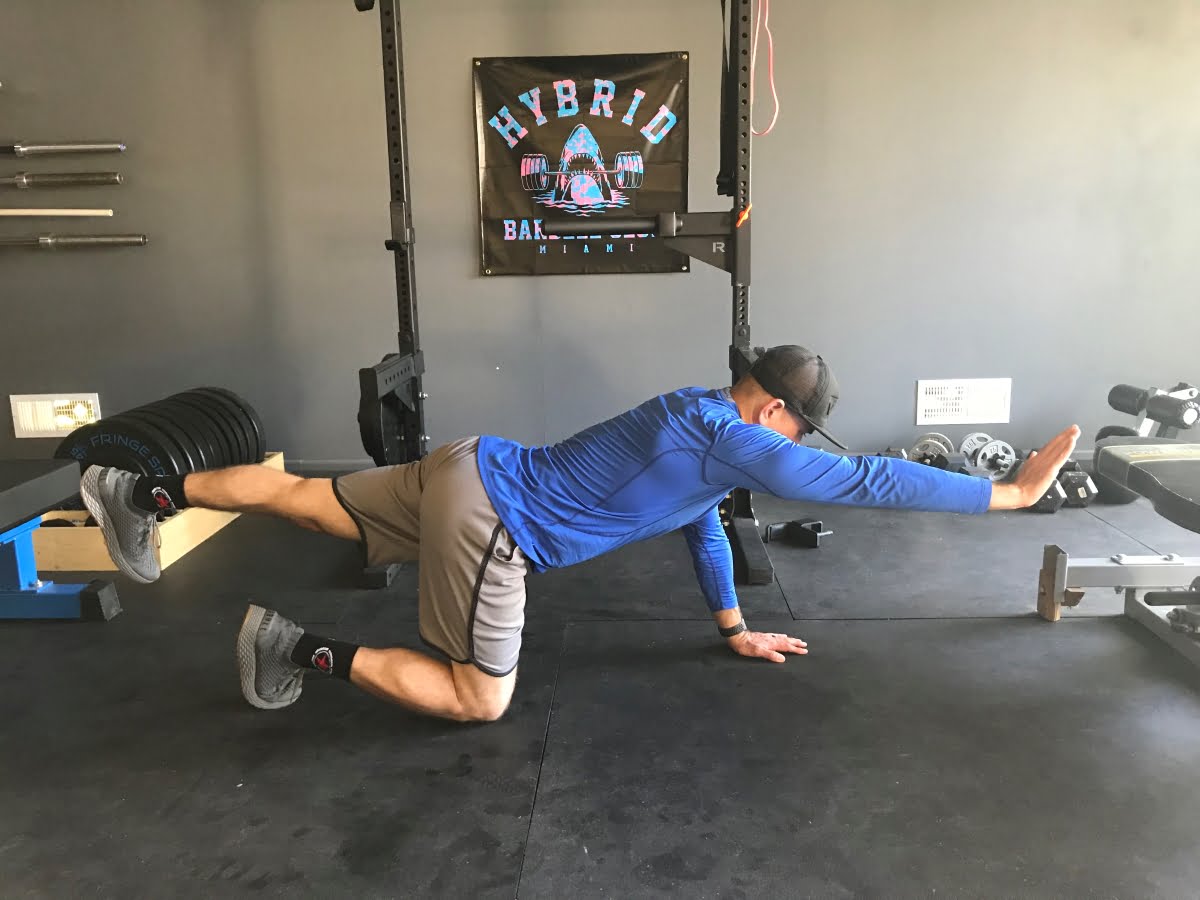The best exercises and stretches to keep your lower back injury free
About a year ago, I wrote and published the first lengthy article on this website, “Batman and the Capacity for Self-Discipline.” It’s nice to see how things have come along since then, and I’m proud of the work I’ve done for this little corner of the internet that takes ideas from pop culture and turns them into actions for self-improvement.
It’s funny how life imitates art. Even when it comes to fitness. Looking back now, I can see it all started with reading Batman: Knightfall, Vol. 1. 2020’s been a muther, and I was (as always) looking for a little Bat-spiration. I picked up a copy of Knightfall, Vol. 1 for a good deal at a used bookstore recently and have spent the past week going through it. In this classic Batman yarn, our hero is running ragged when a new villain, Bane, busts out all of Gotham’s worst criminals from Arkham Asylum.
Already exhausted and barely able to keep going, Bats sets about running a gauntlet of his rogue’s gallery, rounding them all up once again, and getting ever more spent and debilitated while doing it. It’s a long and tiresome process for the Dark Knight, and I couldn’t help but notice the parallels between his predicament and the state of our current world. He continually tries to get ahead of the curve by trying harder and working harder, only to have more and more work ahead. Have you experienced this yourself? You try and soldier on each day, trying to do your best in the given situation, and find yourself asking “when is this all gonna end?”. But I digress.
At the end of all of this, with Batman at the end of his rope, Bane decides that the moment is right. He confronts Batman at his weakest, easily defeating him and in one of the most famous scenes in all of comics, literally breaks Batman’s back over his knee.

Oww. I was looking forward to reading Vol. 2 and seeing how Batman builds himself back into the most feared vigilante of Gotham. I was raring to go this morning for a long and intense strength session, consisting of some cleans, back squats, and bench, among other things. I haven’t been very motivated lately, lifting wise, so I was going to seize upon this spark of motivation I was feeling.
Warmups felt decent, and I was steadily increasing the weight on cleans, planning to work up to a heavy triple or maybe even a double. I put 175 on the bar, and as I started the initial pull from the floor, I felt that old familiar tightness and a blazing pain on both sides of my lower back as it totally seized up.
I dropped the bar and flopped onto the floor, not unlike a broken Bruce Wayne dressed as a giant crimefighting bat. As I lay there, I knew that now, not only was my workout finished, but most likely the next week or so was going to be uncomfortable as hell.
The last time I worked my lower body was 9 days ago. I’ve gone for a few runs and had some upper body focused lifting sessions since then. What I haven’t done is complete the small number of exercises I typically do weekly to ensure I stay healthy. I brought this on myself, I admit. I slacked on the exercises that keep me mobile and strong in the right places. On top of this, my body’s just been tired. Tired from work. Tired from COVID related isolation. Tired from a long cut without a recent deload. Looking back, it seems obvious now.
Did Bats neglect something important which led to his weakened state? I’ll have to look into that and if you know, please state it in the comments section! It’s worth noting here that we all need rest. Even Bruce Wayne/Batman can become immune to the signs that he needs a break and we, as everyday men and women, definitely can too.
But Bats is the master of preparation. He may do too much sometimes, but he wouldn’t neglect to do his injury prevention accessories, right? Right. Below are the exercises and stretches that, when done consistently, have kept me injury free and making gains. That is, after all, one of the keys to making gains- staying injury free.
If you’ve arrived here after suffering a back injury, let me go ahead and state that I’m coming from the perspective of someone who’s experienced minor back tweaks off and on for years (like many lifters). But I’ve been lucky and all of my injuries have been mild muscle strains. After the above incident I did get checked out at the doctor and they confirmed that it was a muscular strain.
If you’ve had serious back injuries/problems in the past, or you think you may have suffered a serious back injury, please go get checked out! Your doctor can give you a proper diagnosis and set you on a path to recovery that’s appropriate for your situation. Before we go on, let me make a disclaimer.
I AM NOT A MEDICAL PROFESSIONAL
Furthermore, I really don’t have any other qualifications. I don’t have any certifications in strength and conditioning, nor do I have a degree in physical therapy. I want to be transparent about that. I whole heartedly recommend you seek out the advice of professionals and I’ll even link to a couple of my favorites at the end of this article.
I’m going to focus mainly on prevention here, but I do also plan on doing these exercises, a little at a time, building up gradually, as part of rehabbing my body. The below recommendations are given out of experience. Simply put, when I do these exercises my body doesn’t hurt. When I get lazy and skip them, it does hurt, or worse, I get injured. Try these out in your next workout. See if they work for you. They might not be the answer to your issue(s) but then again, they just might make a world of difference for you.
In any case, be like Batman and do your injury prevention work! This article is partially a note to myself to not get lazy and complacent with this stuff. I’m willing to bet there’s someone out there in a similar position, so hopefully this is helpful to others as well. It’s easy sometimes to think that I don’t have time for everything and I’ve gotta squat heavy to keep up my strength so I don’t lose those gains and can’t I just do these exercises later in the week? No! You’ve got to prioritize injury prevention, known as “pre-hab” in some circles. It’ll keep you on the train. You know. The train of gains? Now onto the exercises!
MOBILIZATION
One thing that can prevent a back injury is getting your body warmed up and moving correctly prior to your workout. Normally, I’ll jump some rope and do some air squats as well as go through some stretches, no matter what the day’s workout entails. However, when I’m preparing to squat, deadlift, or do any Olympic lifting, i.e. things that load your back, some specific preparation is called for.
All of these movements benefit from strong glutes and strong glute activation. Why am I talking about glute activation when this article is supposedly about preventing back injury? The issue often, is that if your glutes aren’t doing their important job of activating to help you complete your lifts, the lower back will then try to compensate. And that leads to injury.
What seems then like a lower back issue, is oftentimes a weak glutes issue. In the next section, we’ll talk about some exercises that will strengthen the all-important glutes. This part here is about getting them warmed up and firing correctly.
Cat-Camel (or Cat-Cow)
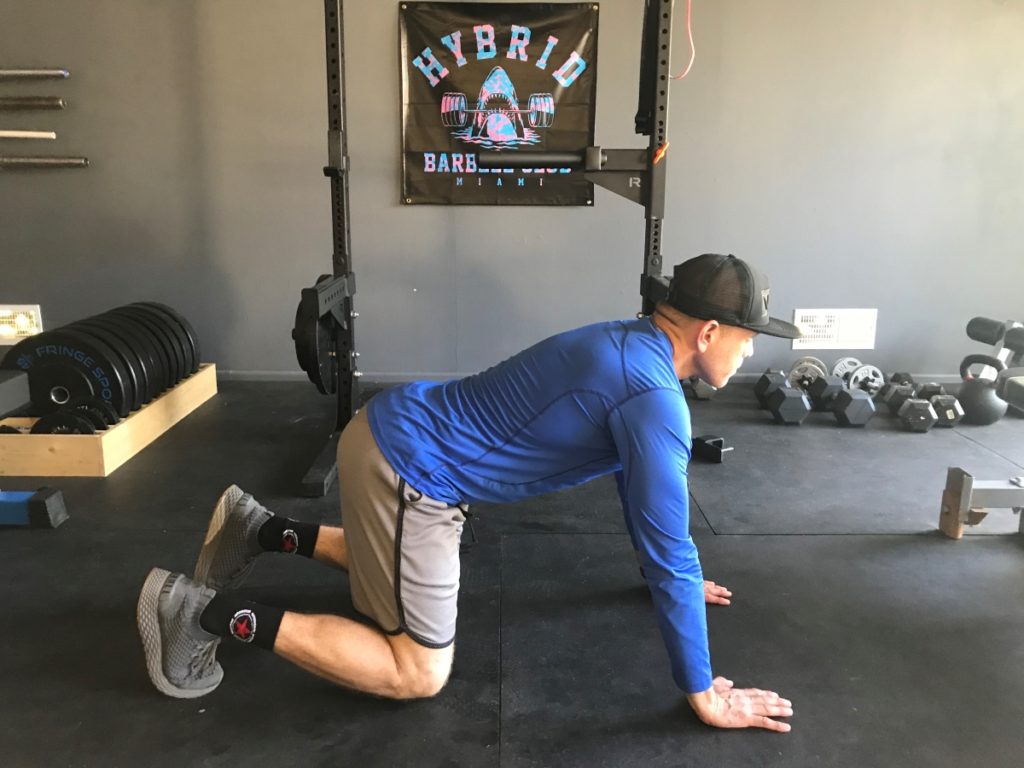
After you’ve moved around some with some walking or light jump roping, this stretch will give you a chance to check in with how your body is feeling and should get your back feeling nice and limber. Start on all fours on the floor. Proceed to bow your back in a relaxed manner and feel the limits of this range of motion while tightening your abdominal muscles. If your back is feeling sore or fatigued you’ll probably notice it here. This is the “camel” portion.

Next, move in the opposite direction, arching your back. Again, you’re working on limbering up your back and getting a sense of how mobile you are. Sometimes this is called the “cow” position instead of cat, because you’re dropping your stomach towards the floor. In this case, the former position would be “cat” now 🤷♂️. Apparently, it’s important to know animals if you want to limber up your back. Regardless of if you have strong opinions on which animal best represents which position, this is a great warm up exercise.
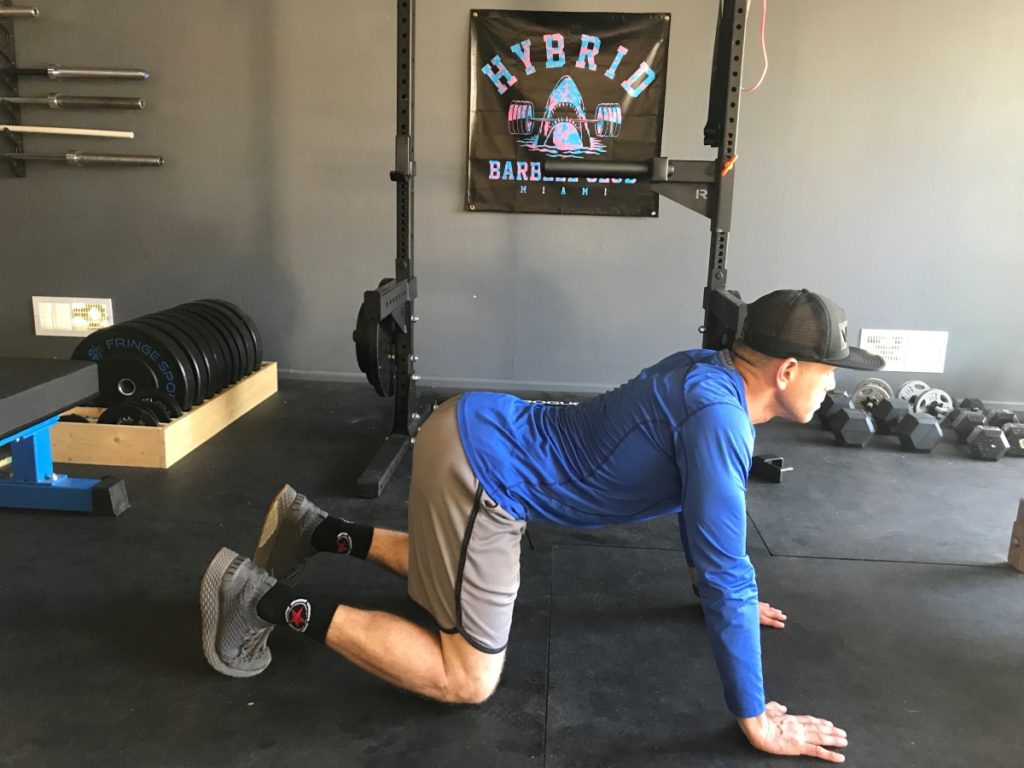
Plank


This is a very well-known movement and is a great exercise to work your abs. Here, we’re just gonna do it long enough to get those abs firing. The goal isn’t to totally fatigue your abdominal muscles, but to get them firing so they’re ready to brace you when you start your lifting. Keep your body in a straight line from head to heel.
Glute Bridge


Again, you could use this as an actual exercise to build strength. When coming back from an injury that’s probably a good idea. However, here we’re again going to just do it enough to get the glutes firing. If you’re like me, your glutes don’t naturally engage as much as your other muscles do. I have to be very intentional when flexing my glutes or when engaging them to assist in my lifts. This is therefore, a very important warmup exercise for me to get them flexing on demand, so they can do their job and assist with my lifts, and keep my lower back from trying to take too much of the load.
GLUTE and CORE STRENGTH
Do the McGill Big 3. This isn’t the first time I’ve mentioned the McGill Big 3 (curl up, side plank, bird dogs) on the site, and if I were pressed for time and forced to cut things down to a bare minimum, these three exercises are the ones I’d keep no matter what! Do them all together at least once a week, preferably in addition to some of the other exercises here and you should be in good shape to handle the big lower body lifts. I particularly notice when I do these that I feel much more stable in my core on the descent when doing a back squat (or front squat) and doing the bird dogs keeps the pressure off my lower back.
Curl Up


For this exercise, ensure that you minimize movement of the lower back. You should have a slight arch throughout. If you allow the lower back to flex and move during the exercise it’ll defeat the purpose of the movement, which is to strengthen and stabilize the anterior core muscles.
Keep one leg straight on the floor and the other bent at about a 90 degree angle (for the whole set). Alternate which leg is bent each set. Do 2-3 sets of 10, holding the “up” portion for up to 10 seconds before returning to the floor. To increase the challenge you can lift your elbows off the floor when you raise up.
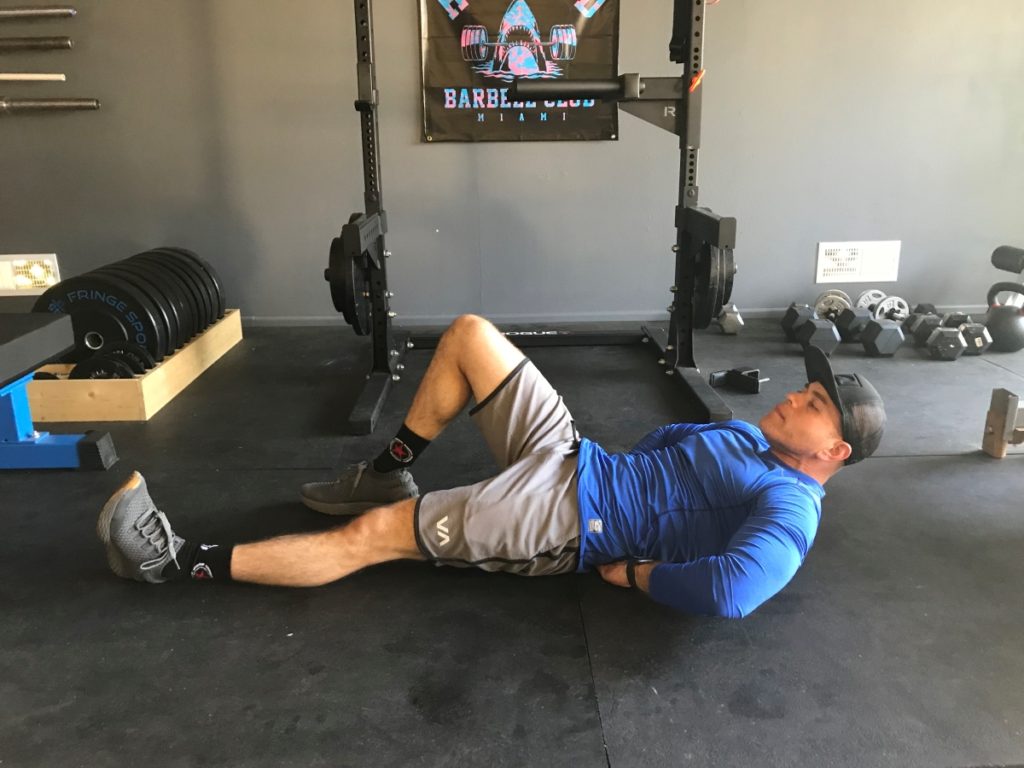
Side Plank

Now that you’ve targeted the anterior core muscles with the aforementioned Curl Up, this exercise will target your obliques. The result is increased stability when ascending/descending with a heavy load. If you squat the day after doing these, you’ll feel the muscles engaging (in a good way!). Start with 2 sets of 10 for each side, building up to a hold of 60 seconds.
Bird Dogs


For my money, this is it right here. This exercise has made the biggest difference in alleviating lower back tightness (when done consistently!). I used to do these and hold each side for a count and then go into the next rep. It wasn’t until I started to hold the position that it really started making a difference. Use good form and do your best to hold your body in a straight line.
There are exercises you can do with load to really build muscle in the glutes, but I’d still always keep these in my tool box as they can be very intense just from the time under tension. Do 2-3 sets of 8-10 reps, alternating sides every repetition. Hold each rep in the “up” position for up to 10 seconds. You should feel a pretty good burn in the glutes towards the end of each set!
Barbell Hip Extension
If you want to build muscle in the glutes, this is a great option (and my favorite) to build that Bat booty. Are you picturing Batman with a bidonka donk now? I’m sorry about that.

One key is to start off light, so you can really focus on the mind-muscle connection and what it feels like to fire those glutes. If you start off with a big ego and heavy weight, you might actually be able to lift it, but you won’t be training your glutes properly. Your other muscles, such as the hamstrings, will try to pitch in, defeating the whole point of the exercise.

Squeeeeeze at the top. I usually like to hold the last couple reps of each set at the top for a few seconds. Start with 3 sets of 10 and increase the volume or intensity (amount of weight) gradually each week.
Hollow Body Holds
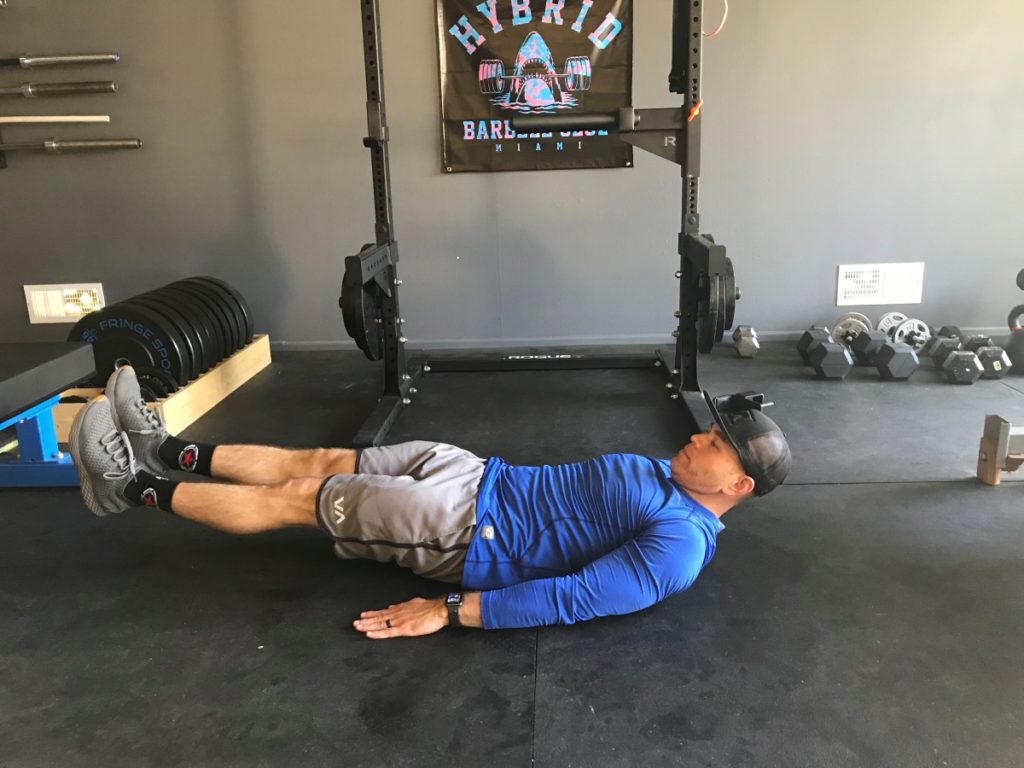
I’ve started doing these in the past year and I really like them as an alternative to traditional, i.e. “crunching”, ab work. It’s essential here to keep the small of your back flat against the floor. The longer you hold the position the more you fatigued you’ll become (obviously) and you’ll notice your back begin to arch up off of the floor.
Because of this tendency, you’ll notice there’s a progression to these. Begin by simply laying flat on the floor with your hands at your sides, touching the floor. Raise your feet up off the floor about six inches. Hold for about 20-30 seconds. Rest and repeat for 2 or 3 sets.
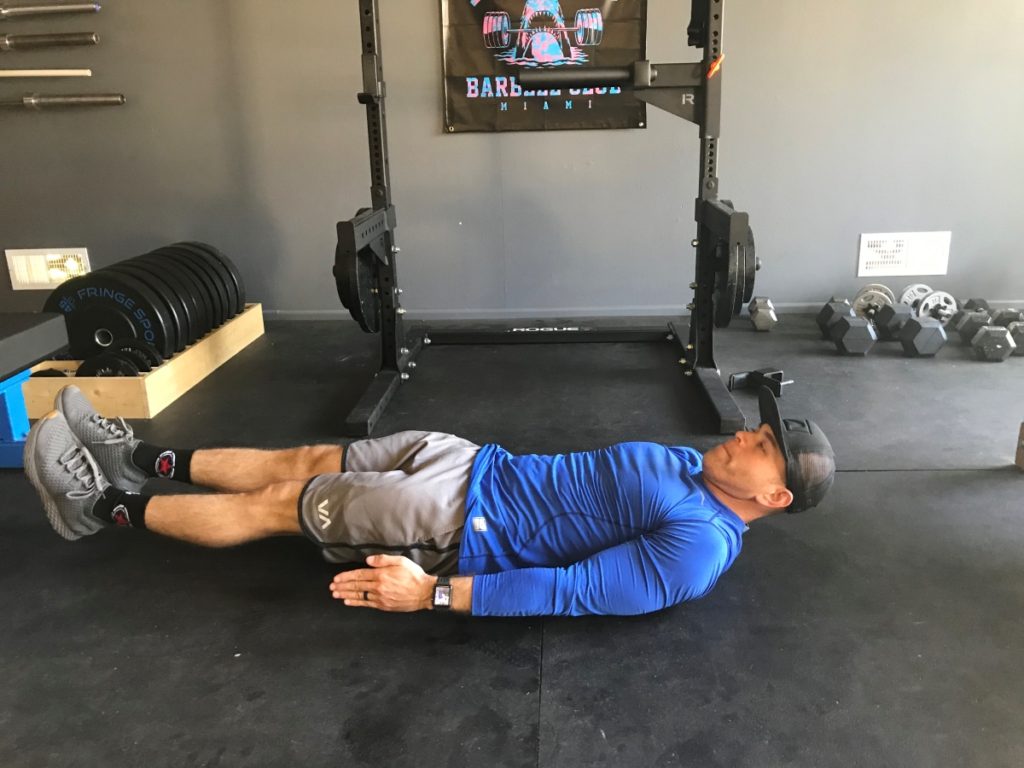
The next variation is almost the same, only now you’ll raise your hands/arms slightly above the floor. Keep yourself accountable, and if your back comes off the floor stop the exercise or return to the easier variation.

Finally, when you’ve got the hang of things and can keep your back flat with abs contracted, you’ll move on to your “final form”. Slowly extend your arms above and behind you. Do a couple sets of these, holding for 20-60 seconds and you’ll strengthen your core and increase stability in all positions!
COMEBACK
It’s now been about a week since I injured myself and I’ve already started working back, little by little. I’ve mostly walked, done some light running and done some bodyweight stuff. Oh, and I’m making sure to prioritize these movements 👍.
I assume that ol’ Bats recuperated in much the same way. Nursing himself back to health while studying his enemy and formulating ways to prevent such an event from ever happening again. I have no doubt that he learned some valuable lessons along the way and I plan to do the same, always experimenting in order to improve.
Hopefully, some (or all) of these exercises will work for you. I hope you’re successful in building a body that’s stable, pliable, and resistant to injury. What techniques do you use for injury prevention and/or rehab? If you use different exercises or methods for keeping your lower back safe, let me know down in the comments. I could always use another tool in my toolkit and I’d love to hear about them. In the meantime, I’ll be building myself back in my garage gym or on the hunt for a good deal on the second volume of Knightfall. Happy lifting!

Athlean X– Great resource with tons of tips on injury recovery and prevention
Squat University– Another good one with lots of technical advice, geared more towards olympic lifting

